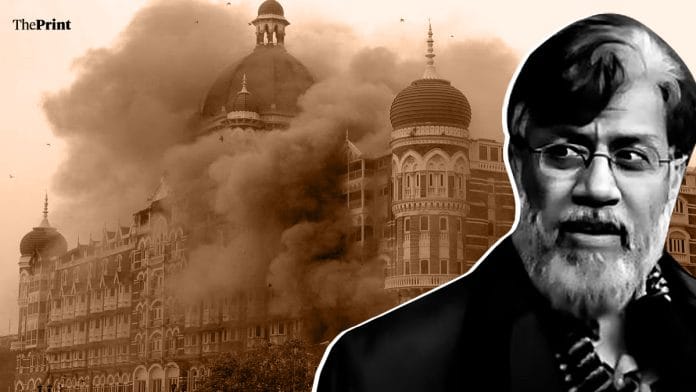New Delhi: A special team of the National Investigation Agency (NIA) is set to return Thursday afternoon with Tahawwur Hussain Rana, a co-conspirator of the November 2008 terrorist attack in Mumbai. Rana is the first of nine named accused in a chargesheet filed by the NIA in December 2011 as part of its probe into the 26/11 terror attack—that claimed the lives of 166 people and lasted for three days—to be brought back to India.
Seven others accused in this NIA case are suspected to be in Pakistan, two among them being officers of the Inter-Services Intelligence (ISI). Also an accused in this case, David Coleman Headley who was an operative of the terror group Lashkar-e-Taiba (LeT), was arrested by authorities in the United States in October 2009 and pleaded guilty in March 2012 to all 12 counts brought against him. He is currently serving a 35-year sentence.
As for Rana, he was also named as an accused in a supplementary chargesheet filed by Mumbai Police in 2023 in its probe into the 2008 terror attack. In Rana’s case, India formally initiated the extradition process to bring him back from the US in 2020.
Last week, the US Supreme Court rejected an emergency application by Rana’s legal counsel seeking a stay on his extradition to India.
A team of NIA officials was then dispatched to the US earlier this week to take custody of Rana to bring him back to India to face trial for his role in the 26/11 attacks.
ThePrint looks at the sequence of events that led up to Tahawwur Hussain Rana’s extradition.
3 October 2009: FBI arrests David Coleman Headley
18 October 2009: FBI arrests, indicts Tahawwur Rana
March 2010: Headley pleads guilty to all 12 counts, including aiding and abetting killing of six American citizens in Mumbai in November 2008
9 June 2011: Jury convicts Rana, Headley for conspiring to “behead employees” of a Danish newspaper; same jury acquits Rana on charges related to 26/11 attacks citing lack of evidence
17 January 2013: District court in Northern District of Illinois, US, sentences Rana sentenced to prison for 14 years
28 August 2018: Special NIA court in India hearing 26/11 attack case issues warrant for Rana’s arrest
9 June, 2020: District court in US grants Rana release on “compassionate grounds” based on health review in light of pandemic
10 June 2020: US government seeks arrest warrant for Rana under India-US extradition treaty
21 July 2020: US court grants request for detention pending extradition
13 August 2020: India files additional documents highlighting offences allegedly committed by Rana
16 May 2023: Magistrate Court in California clears Rana’s extradition to India
10 August 2023: District Court in US denies Rana’s petition challenging order of extradition
18 August 2023: District Court stays proceedings citing Rana’s pending appeal before US Court of Appeals for the Ninth Circuit
15 August 2024: US Court of Appeals affirms District Court’s order of extradition
13 November 2024: Rana moves US Supreme Court seeking stay on extradition
16 December 2024: US government opposes Rana’s plea
21 January 2025: US Supreme Court dismisses Rana’s plea
28 February 2025: Rana moves another plea seeking stay on previous US Supreme Court order dismissing his plea
11 February 2025: US Secretary of State Marco Rubio signs Rana’s surrender to India
2 March 2025: Rana moves supplementary application in US Supreme Court citing observations made in extradition hearing of fugitive Sanjay Bhandari in the UK
7 March 2025: Rana renews his emergency application for stay and requests that it be directed to Chief Justice John Roberts
7 April 2025: US Supreme Court dismisses Rana’s emergency application
(Edited by Amrtansh Arora)
Also Read: Government appoints special public prosecutor in 26/11 case with Tahawwur Rana set to face trial






